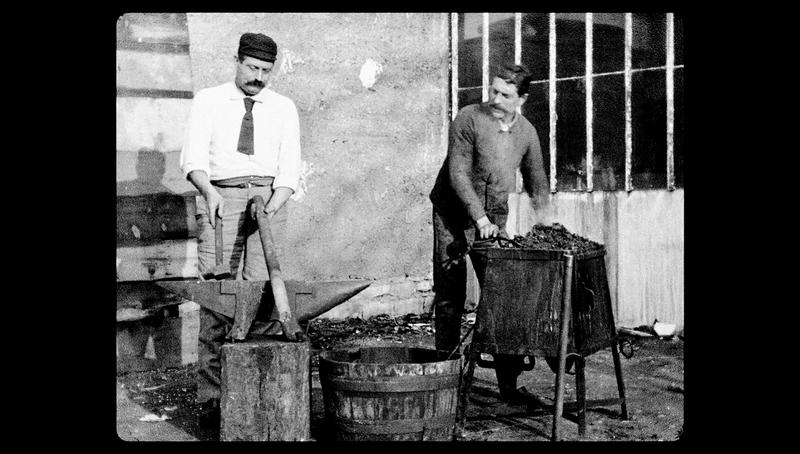Towards a new source of cinematographic documentary encyclopaedia
The thoughts of Polish photographer Boleslas Matuszewski on the necessity of creating storage facilities for film reels in order to sustain the work of historians and to encourage collection efforts and the enhancement of Lumière film production are still valid today. These two approaches have been fuelled by debates that governed the creation of documentary photography museums. Tracing this “causality” in the two projects enables their potential points of intersection to be emphasised. These similarities fall within the genealogy of the visual documentary encyclopaedias such as Gaumont or the Pathé brothers would later develop, followed by Pathé Cinema from the 1910s onwards.

Louis Lumière, Forgerons, Lyon, quartier Monplaisir, 1895, bande de celluloïd 35 mm, vue 51. © Société française de
photographie, Paris.
Béatrice de Pastre is a specialist in film and photography heritage. She holds a postgraduate diploma in philosophy from Paris IV Sorbonne, and was the head of the Cinémathèque Robert Lynen in Paris and the president of the Fédération des Cinémathèques et Archives de Films de France. She currently serves as the assistant director of film heritage and the director of the collections of the National Centre for Cinema and the Moving Image (CNC). She has published, with Monique Dubost, Françoise Massit-Folléa, and Michelle Aubert, Cinéma pédagogique et scientifique. À la redécouverte des archives (Éditions ENS, 2004) and, with Thierry Lefebvre, Filmer la science, comprendre la vie. Le cinéma de Jean Comandon (Éditions CNC, 2012).
Keywords: archives, cinematographer, photography, Matuszewski, Lumière, documentary film
Citation: Béatrice de Pastre, « Matuszewski/Lumière. Pour une nouvelle source des encyclopédies documentaires cinématographiques », Transbordeur. Photographie histoire société, no. 1, 2017, pp. 86-95.